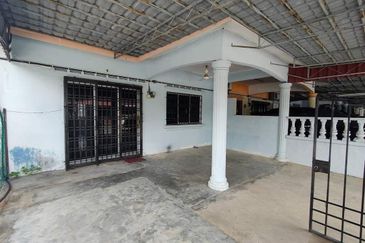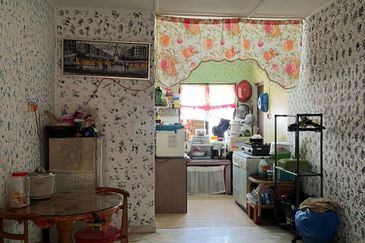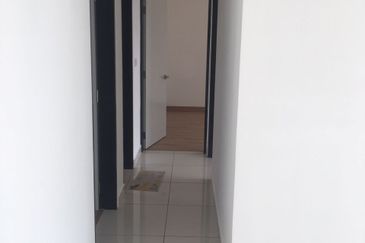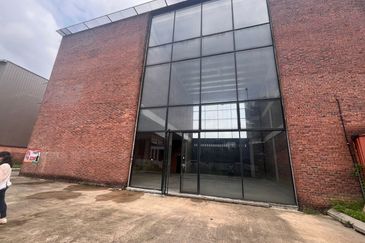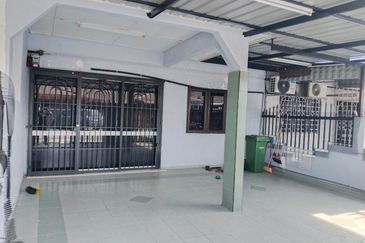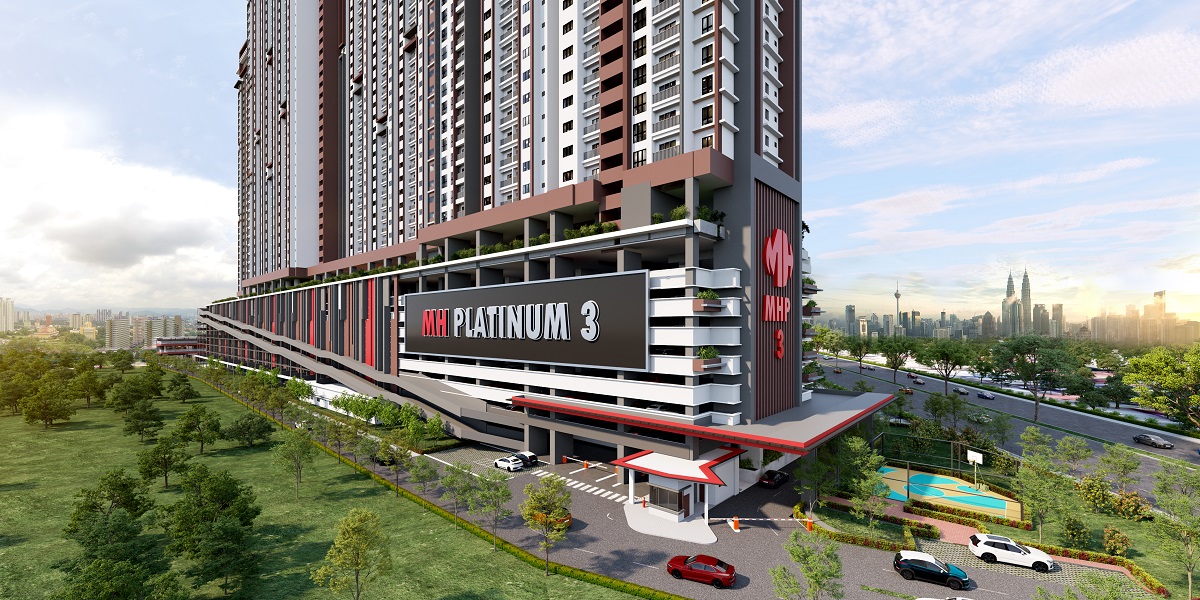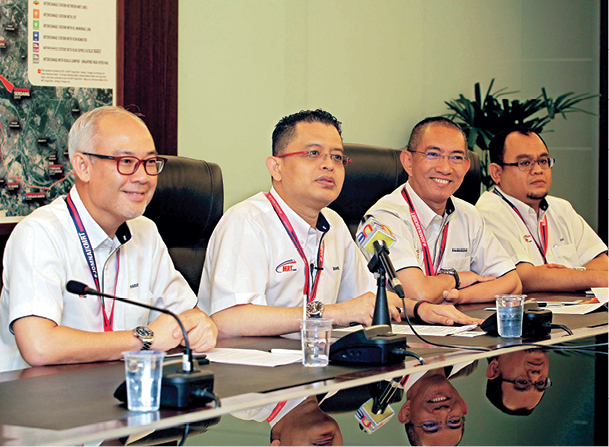
KUALA LUMPUR (Nov 14): The decision to limit the tender period for the mass rapid transit Line 3 (MRT3) project to 45 days should not be politicised, said Mass Rapid Transit Corp Sdn Bhd (MRT Corp).
“There are no political elements involved in the design of MRT3. It is transparent, and the tender period is open from Nov 15 until Dec 29,” said MRT Corp chief executive officer Datuk Seri Shahril Mokhtar, at a media briefing yesterday.
Shahril disagreed with the suggestion that the shorter timeline would pose a challenge for robust participation in the tender process.
“We have the necessary experiences, and we know they [the bidders] can do it. These are regular railway players in the market, and they are certainly not new to our processes and requirements,” he said, adding that the shorter timeline is in line with the new target completion date for the project.
"As you know, the prime minister in his Budget 2018 speech announced that the construction of MRT3 has been moved forward to 2025, two years ahead of the original 2027. And to meet this deadline, it is only sensible that construction of MRT3 commences as early as possible," said Shahril.
MRT Corp, he said, wants the construction of MRT3 to run concurrently with the construction of MRT2 so as to meet the stated deadline.
Shahril said the company expects to kick off the construction of MRT3 — estimated by analysts to cost around RM40 billion — by as early as the third quarter of 2019, with completion in about 75 months.
He said MRT Corp expects the first phase of the project to be completed by the end of 2025, and the second phase by September 2026.
The company expects to announce the successful bidder by as early as February 2018, he added.
“We will organise a briefing for MRT3 on Nov 15, and the tender will be closed by Dec 29. Then, it is up to the responsible committee to pick and select the most suitable candidate for the job,” he said.
Shahril rejected the view held by some analysts that no local contractor fulfils the technical experience required to bid for the leading contractor’s role to undertake the project on a turnkey basis, and to provide financing for it.
"It is not true that local contractors are seen as incompetent to bid for the leading role in MRT3 jobs. I am in talks with capable ones almost on a weekly basis, and to ensure smooth completion of MRT3, local firms are allowed to partner with eight firms. Now, who says that our local firms can't bid for the leading role?" he stressed.
At the same time, Shahril also said if a local contractor is good in civil engineering work but is lacking in terms of signals and systems, then a strategic partnership is the key to enter the bid.
“It is all about partnership and complementing each other. In railway engineering, two key aspects are important: civil works and signalling systems. This is where smart partnership is vital,” he added.
Previously, Nomura Securities Malaysia Sdn Bhd had said that the huge requirement to finance up to 90% of the total MRT3 cost — which could be worth more than RM30 billion for a minimum of 30 years, and sanctioned with a moratorium for the first eight years — in addition to the relevant technical experiences required, is likely to pave the way for foreign contractors to bid for the leading contractor role.
“Who says local firms are not welcome or won’t be able to participate in the MRT3 project? Even if a foreign firm wants to come in and bid [on their own], they won’t be able to do that as one of the requirements is to have local and bumiputera participation,” he said.
Declining to reveal the alignment of MRT3, Shahril said MRT Corp is still in discussion with regulators and the local authorities, particularly with the Land Public Transport Commission, on the matter.
He said the company hopes to announce the route, which will mostly be elevated and underground, by the end of 2018.
It was previously reported that MRT3 will cover hotspots in the city centre such as Ampang Jaya, the Kuala Lumpur City Centre, Jalan Bukit Bintang, the Tun Razak Exchange, Bandar Malaysia, KL Eco City, Pusat Bandar Damansara, Mont’Kiara and Sentul.
“MRT3 is expected to complement MRT1 and MRT2, and it will also integrate with the railway lines operated by Prasarana Malaysia Bhd and Keretapi Tanah Melayu Bhd,” said Shahril.
The already operational MRT1 stretches from Sungai Buloh to Kajang, while MRT2, which is currently under construction, will connect Sungai Buloh to Putrajaya via Serdang.
In a tender notice released early this month, MRT Corp said MRT3 is expected to be 40km long, 32km of it underground and the remaining 8km elevated. The underground portion is expected to feature 19 stations, while the elevated portion will have seven stations.
MRT3, also referred to as the Circle Line, is set to be the 13th urban rail transit line and the fifth fully automated and driverless line in the Klang Valley.
‘Shunning PDP model for turnkey approach not a negative surprise’
KUALA LUMPUR (Nov 14): Mass Rapid Transit Corp Sdn Bhd (MRT Corp) says its decision not to pursue the project delivery partner (PDP) model to build the mass rapid transit Line 3 (MRT3) should not be construed as a negative surprise, as it is embarking on a much more efficient and cost-saving route to build the urban rail network.
“In the construction of MRT1 and MRT2, MRT Corp used the PDP model for the elevated portion and systems, but, bear in mind, that for the underground portion, it was a consortium of MMC Corp Bhd and Gamuda Bhd who got the job,” said MRT Corp chief executive officer Datuk Seri Shahril Mokhtar. “For the underground segment, it was MRT Corp who is managing the said portion.”
Shahril told a media briefing that of the expected 40km stretch for MRT3, about 32km will be underground while the remaining 8km will be elevated.
“Since we have the necessary experiences to manage the underground portion, I think the question of not pursuing the PDP model should not have arisen, as we are capable of managing the turnkey contractor like we have done in the past,” he said.
At the same time, Shahril said by not pursuing the PDP model, MRT Corp can incur savings of between 4% and 6% in PDP fee, “which could be to the tune of billions”.
Shahril noted that 4% of the RM21 billion cost of the completed MRT1 — stretching from Sungai Buloh to Kajang — comes to RM840 million.
“That, of course, is a very simple and naive calculation and it may not represent the whole picture. But using that theoretical calculation to illustrate the logic in saving the PDP fee to be incurred, you can roughly work out yourself, using the right parameters, on the amount of cost that MRT Corp can save,” he added.
Asked about the expected cost of MRT3, Shahril said it is too early for MRT Corp to provide any estimates at this juncture, but agreed that the cost of the new line will be higher due to its longer underground portion.
According to a preliminary estimate by CIMB Investment Bank Bhd, the cost to build the 32km underground portion is expected to be RM37 billion, based on the assumption that MRT Corp will spend RM1.15 billion for every kilometre drilled.
As for the financing of MRT3, Shahril said bidders will have to rope in relevant financial institutions that could offer a complete financing package with an attractive rate.
“There is a misconception that the turnkey bidder will have to finance the project on their own. That is not the case as the turnkey firm must bring along relevant financiers, who could offer an attractive rate,” he said.
Citing the upcoming MRT projects in Indonesia and Vietnam, as well as the East Coast Rail Line (ECRL) connecting Selangor to three East Coast states, Shahril said the market is aware that attractive packages can be obtained if the bidders structure the project carefully.
“The reason we are pursuing this method is because we want to test the market and explore various avenues to lower the borrowing cost. If there is no favourable bid, MRT Corp can always switch back to financing, potentially infrastructure sukuk or bonds, raised by DanaInfra Nasional Bhd,” he said.
“This also explains the shorter tender period of 45 days, so that it will provide us with ample time to explore various financing options,” he added.
In the case of the 688km-long ECRL, it was reported that the Export–Import Bank of China Ltd is providing a 3.25% interest on a soft loan to the Malaysian government to finance 85% of the total project cost that is valued at RM55 billion.
“It is good if we can get 3%, or 2%, or even 1%. I am sure somewhere out there, such an attractive term could be possible. But compared to the rate by DanaInfra, I am unable to make such a comparison as yet,” he added.
However, Shahril cautioned that if MRT Corp switches the financing mode from the expected bank borrowings to sukuk, the latter to be raised by DanaInfra, then the overall structure of MRT3 project “will not be a turnkey anymore”.
“It will follow the previous projects in MRT1 and MRT2, where packages are awarded in different parts. But that is too early to tell, pending relevant submission and outcome from the potential bidders,” he added.
In a previous tender notice, MRT Corp said successful bidders for the MRT3 project must include a minimum financing period of 30 years, with a drawdown period up to 2028, and sanctioned with a moratorium period of eight years.
This article first appeared in The Edge Financial Daily, on Nov 14, 2017.
For more stories, download EdgeProp.my pullout here for free.
TOP PICKS BY EDGEPROP
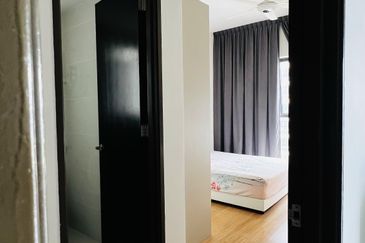
Baypoint @ Country Garden Danga Bay
Johor Bahru, Johor
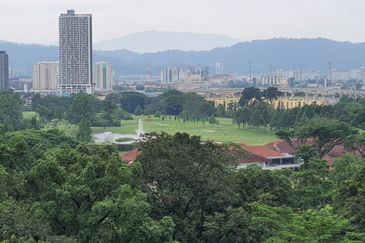
Menara Bintang Goldhill
Bukit Bintang, Kuala Lumpur

Bandar Bukit Tinggi
Bandar Botanic/Bandar Bukit Tinggi, Selangor
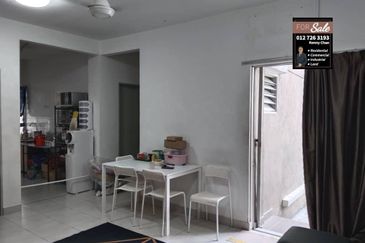
Pangsapuri Akasia, Bandar Botanic
Bandar Botanic/Bandar Bukit Tinggi, Selangor
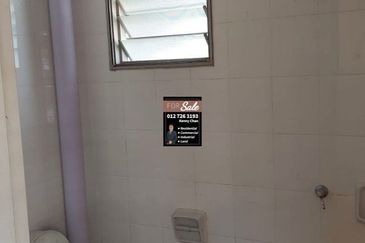
Pangsapuri Akasia, Bandar Botanic
Bandar Botanic/Bandar Bukit Tinggi, Selangor

Pangsapuri Akasia, Bandar Botanic
Bandar Botanic/Bandar Bukit Tinggi, Selangor

Menara HLX (formerly Menara HLA)
KL City Centre, Kuala Lumpur

